10 Ways to Find True Happiness
Introduced by Kaira Jewel Lingo, ten Black dharma teachers dive deep into the paramis, the ten qualities of enlightened beings. The post 10 Ways to Find True Happiness appeared first on Lion’s Roar.
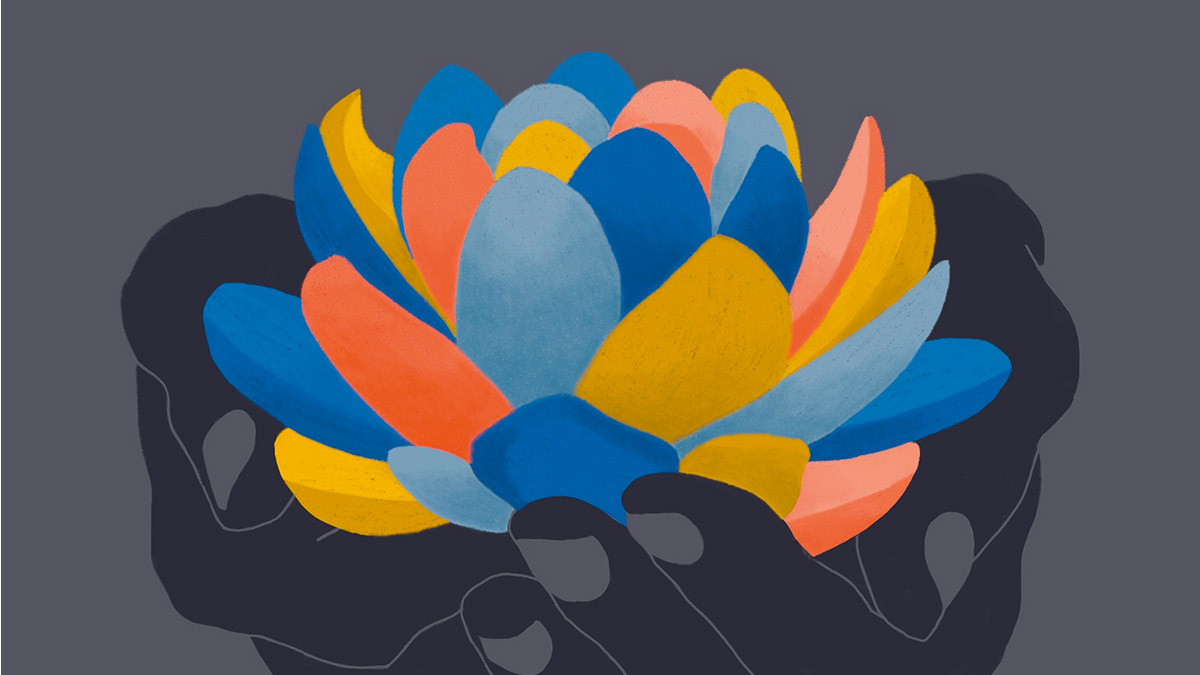
The paramis or paramitas are qualities that help us develop and reach true happiness, our highest potential. They are often translated as “perfections,” as they are the perfections of character necessary for enlightenment.
Zen master Thich Nhat Hanh called them practices that help us cross from the shore of confusion and suffering to the shore of liberation. Kittisaro, cofounder of Sacred Mountain Sangha, speaks of them as “the essential qualities of heart that carry us safely through the swirling floods of existence to the unshakeable groundedness and well-being of our true nature.”
“May we all be guided by the beautiful paramis and paramitas on our path of awakening.”
While parami and paramita are both Pali terms, Pali literature mostly uses the term parami, while paramita is more common in Mahayana teachings. In the Pali canon there are ten paramis, and in Mahayana texts there are six paramitas. As you will see, there’s quite a bit of overlap.
The ten paramis are:
1. Dana: generosity
2. Sila: virtue, morality
3. Nekkhamma: renunciation
4. Panna: wisdom
5. Viriya: energy, vigor, effort
6. Khanti: patience, tolerance
7. Sacca: truthfulness, honesty
8. Adhitthana: determination, resolve
9. Metta: goodwill, loving-kindness
10. Upekkha: equanimity, serenity
The six paramitas are:
1. Dana: generosity
2. Sila: virtue, morality
3. Ksanti: patience, tolerance
4. Virya: energy, vigor, effort
5. Dhyana: one-pointed concentration, meditation
6. Prajna: wisdom
I learned about the six paramitas when I was twenty-three, the first time I attended a retreat in Plum Village, France. I was deeply moved by their nobility. While hiking in the Pyrenees after the monthlong summer retreat, I remember coming upon a beautiful tree covered in soft, emerald moss. In that moment, I spontaneously improvised a paramita prostration practice with the tree as my altar.
I knelt with reverence to the tree. I placed my forehead on the earth and turned my palms upward. I breathed in and out, contemplating how I could be more open to the paramita of giving, looking for concrete ways to cultivate generosity in the coming days. After a few minutes, I stood and bowed. I prostrated again, nestling into the soft earth, and contemplated how I could deepen my ethical conduct in daily life. Then, in turn, I contemplated the other four paramitas.
Looking deeply to see how I could bring each paramita into my daily life was profoundly uplifting, helping me embed them more deeply in my consciousness. It also gave me a clearer sense of direction for the path of transformation I was walking on.
It’s common for practitioners to take one of the paramis or paramitas as the focus of their practice for a week, month, or year, and then move on to another. For the paramita of generosity, I’ve found Joseph Goldstein’s practice very helpful. He tries to listen to and follow the impulse to give when it first arises. He tries to not be swayed by second thoughts or doubts, which could dampen or lessen the initial thought of generosity. Try it!
In the pieces that follow, ten Buddhist teachers each talk about a different parami. They share how the paramis are classically understood and how practicing with them enriches their lives.
May we all be guided by the beautiful paramis and paramitas on our path of awakening. May they ripen in us more and more each day.
Kaira Jewel Lingo is the author of We Were Made for These Times and coauthor of Healing Our Way Home.
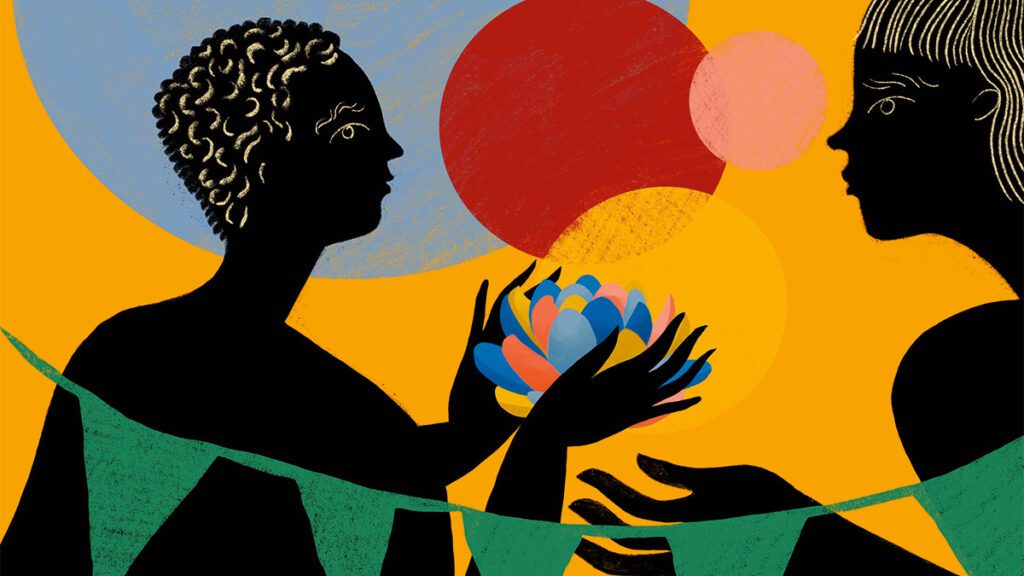
Generosity
Gaylon Ferguson on the three types of giving—and why they’re all important.
The path of wisdom and compassion begins with the discovery of our basic goodness. Basic goodness is not just a theory or idea to believe in; it is a direct experience of warmth and clarity. This spiritual realization has many practical implications for a world filled with suffering.
Fundamentally, in our true nature, we are beings of great insight, loving-kindness, and compassion. Actions we take based on this innate awareness flow generously, harmoniously, and skillfully, and they help and benefit others. However, when we lose touch with this natural wakefulness, our actions become confused and aggressive, selfishly limited to “me first,” or even “me only.” Confusion is the root of stinginess, while wakefulness is the ground of generosity.
“When our hearts are moved to action, we give.”
A person dedicated to realizing wisdom for the benefit of all beings is called a “bodhisattva,” one dedicated to universal awakening. Being a bodhisattva requires transcending concepts of being the center of everything happening around us. We must give and give and give again, while simultaneously shedding idealizations of ourselves. Awakened giving lets go of the small and self-serving storyline in which I, the super-heroic “giver,” gives to you, the “needy recipient.”
Liberated giving is an acknowledgement of flux and change. Today the temporary roles of “giver” and “recipient” flow this way, as I share with you; however, tomorrow things may go in the other direction when you share with me. Neither of us is permanently fixed in the roles of codependent “helper” or “needing to be helped.” Here, giving is less of a big deal, and there’s less sense of who owes what to whom.
Traditionally, there are three kinds of generosity: (1) giving material things such as food, clothing, or shelter; (2) giving fearlessness; and (3) giving the dharma.
The teachings on giving material gifts remind us that practical, down-to-earth engagement is important. Humans’ basic needs must be met before they can engage with anything else, including the dharma. So, we must consider: what does someone actually need? We must listen carefully, beyond our habitual preconceptions. When our hearts are moved to action, we give. It’s crisp, clean, and direct with no sense of “Oh, look at me and how good I’m being by giving you this.”
The teachings on giving courage are particularly fitting in our time of pervasive fearfulness. Giving courage may not involve offering spoken words as much as sharing our presence by simply showing up—being with, feeling with those who are afraid. In such times as these, who is not afraid? By openly acknowledging our fear, we demonstrate basic bravery, which can inspire courage all around.
When we give the gift of the teachings—for example, when we share a dharma book—we are affirming and supporting the recipient’s innate awakening. We’re giving helpful hints to spark the enlightenment already present in us all. As Bob Marley sings in “Redemption Song,” “None but ourselves can free our minds.” Just like the Buddha, we awaken ourselves into our own vast enlightened, compassionate activity. May it be so!
Gaylon Ferguson, PhD, is the author of Welcoming Beginner’s Mind and Natural Wakefulness.
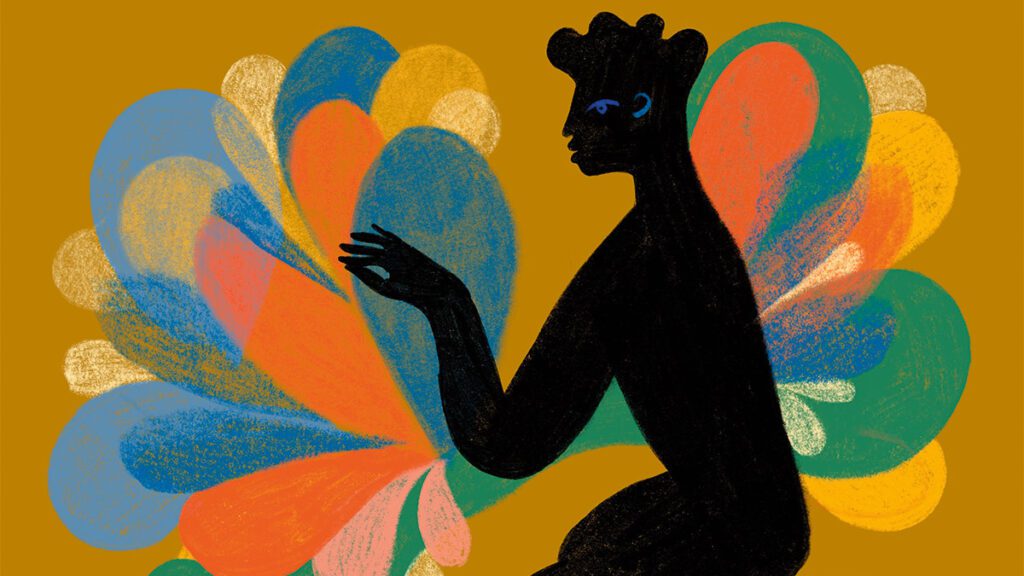
Morality
There’s a clear path to virtue, says Larry Ward. It’s the five precepts common to all Buddhist traditions.
Our world is in a moral emergency affecting our social, personal, and spiritual well-being. Every day, our hearts break from what we see and endure. Fortunately, a new morality is emerging in response, catalyzing social, cultural, and political change.
We’re witnessing radical shifts in social consciousness around sustainability, racism, gender equality, LGBTQ+ rights, and more. With these shifts occurring at all societal levels, we encounter resistance—reactivity, extreme dualism, and even violence.
Our collective patterns of resisting change are centuries old; many people stubbornly resist change, however positive.
“Virtue allows us to find fresh vision for individual and collective wellness.”
Amid this fray, sila (morality or virtue) shines, pointing the way to goodness, kindness, and safety, offering a healing balm to suffering. When we’re overwhelmed with confusion, temptation, and weariness, we can take refuge in practicing sila. This paramita can transform our habitual responses, activate our courage, allow us to transcend outdated ideologies, and awaken the natural morality in our hearts. Sila helps maintain our stability, offering a practical way to untangle the delusions separating us from the earth, one another, and all beings.
Virtue is at the core of Buddhist understanding and practice. The root energy of sila lies in observing the original five precepts taught and transmitted for centuries by all Buddhist traditions. My teacher, Thich Nhat Hanh, reframed the precepts with clearer, more accessible language. Renaming them the “five mindfulness trainings,” he expanded and updated them so we can bring mindfulness into every area of our lives. Rather than strict rules, the trainings offer a path to create a more compassionate world. We’re invited to receive, learn, and embody the trainings.
The first training is reverence for life. Aware of the suffering caused by killing, we commit to cultivating the insight of interbeing, growing our compassion, and learning ways to protect the lives of all beings.
The second training is true happiness. With this training, we’re aware of the suffering caused by exploitation, stealing, and oppression, and we practice generosity in all our thoughts, speech, and actions.
The third training is true love, which is grounded in an awareness of the suffering caused by sexual misconduct. Guided by true love, we protect the safety and integrity of individuals and couples, families and society.
The fourth training is loving speech and deep listening. Beginning with an awareness of the suffering caused by unmindful speech and a lack of listening, we commit to engaging in compassionate speech and listening. We promote reconciliation and peace in ourselves and among other people, groups, and nations.
Finally, the fifth mindfulness training is nourishment and healing. This training brings us into awareness of the suffering caused by unmindful consumption. We practice mindful eating, drinking, and consuming in order to cultivate good health—physical and mental—for ourselves, loved ones, and society.
With these five mindfulness trainings, we practice virtue. This allows us to find fresh vision for individual and collective wellness, and to develop and sustain the embodied perfection of wisdom. As virtue takes up residence in our hearts, it brings love, peace, and resilience to our world.
Larry Ward is a senior teacher in Thich Nhat Hanh’s Plum Village tradition and the author of America’s Racial Karma.
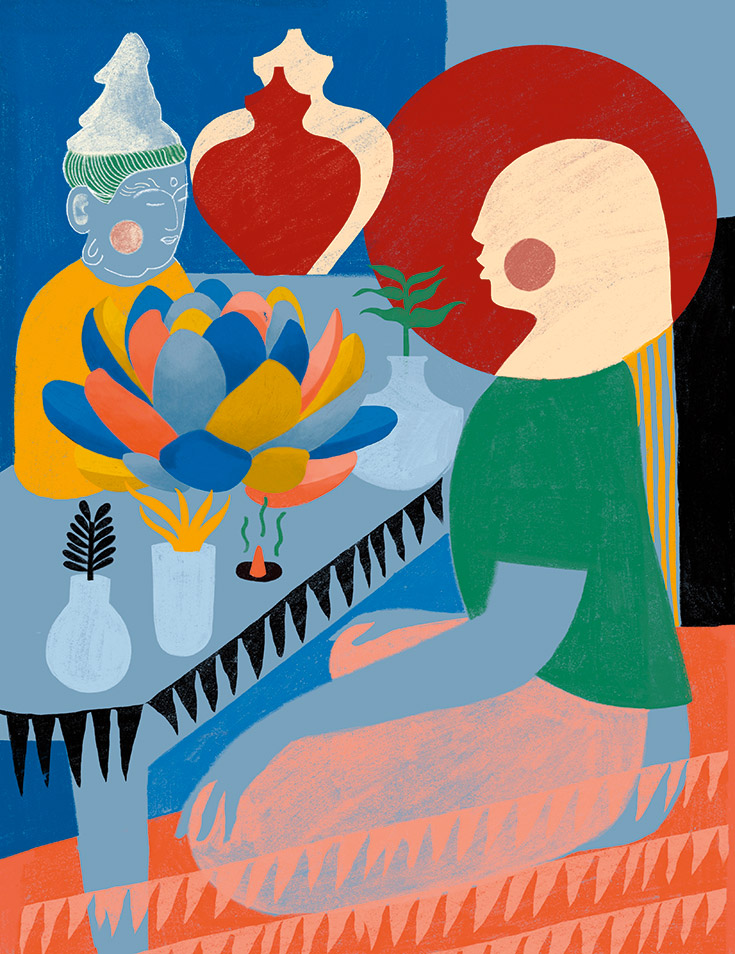
Renunciation
Renounce the ego, the small self, says Tuere Sala. It feels good to let go.
Renunciation, the third parami, is often spoken of or looked upon as harsh and restrictive. Whenever we are in some difficulty where we need support, harshness and restrictiveness don’t resonate. But what we should know is that renunciation actually strengthens our capacity to choose nonsuffering over suffering.
We usually move through life using our reptilian brains, which rely on quick thinking and impulsivity. Our reptilian brains exist in the primal world of habit. A habit gets formed at some point in our lives, and the tendency is that we continue with that habit forevermore. The longer you live, the more habits you have. Most of our habits arise out of one of the three poisons—greed, hatred, and delusion—which means they are continuously leading us into suffering.
“Renunciation creates a gap, so we can see the presence of choice.”
Renunciation acts as an interference to this habitual way of living. It creates a gap, so we can see the presence of choice. This choice, which exists in every moment, is the difference between suffering and nonsuffering. The more we see choice as a real option, the more we can choose nonsuffering over suffering. Renunciation is how we see the existence of choice; it’s what gives us the time to choose nonsuffering.
When I first came into the practice, I created a ceremony for myself to become a Buddhist. I didn’t have a sangha; it was just me and my intention to be a good Buddhist. As part of my ceremony, I vowed to do the least amount of harm possible, to be as kind as I could, and to live with restraint.
At the time, I thought doing the least amount of harm and being kind would be the most difficult things for me to do, mostly because I was very self-centered, arrogant, and overly reactive. It turned out, though, that the vow to live with restraint made the other two vows much easier to live. Ultimately, renunciation is about renouncing the ego, the small self. While renunciation can be about renouncing worldly pleasures, I equated “living with restraint” to not always getting my way.
It was not easy for me to renounce getting my way. As a practicing lawyer, I was smart, articulate, and always assumed I was right. I felt like my way was the most efficient and logical. The idea of following someone else’s way didn’t make sense to me. I considered fully living the vow of renunciation to be an act of generosity. Time and time again, I kept feeling the tension of wanting to get my way. That tension reminded me of my vow. I then had the space to choose to be generous, which allowed me to accept another person’s way.
In the beginning, I mostly ignored the vow. Over time, however, I began to see the choice between enduring the pain of forcing my way upon a situation or being generous. I willingly began to choose being generous over and over again, creating a new habit of mind toward renunciation, generosity, and open-heartedness.
Tuere Sala is co-guiding teacher at Seattle Insight Meditation Society and co-chair of the guiding teacher’s council at Spirit Rock Meditation Center.
Wisdom
Wisdom, says Justin Miles, is a knowing that sees, instead of scrutinizing what it sees.
When I was on a meditation retreat over twenty years ago, people were paired together for an exercise. One person was to ask a question; the other was to listen openly before responding.
I was paired with the director of the retreat. Wanting to impress him, I asked a “deep” question that started something like, “According to the Buddha, the nature of the mind is said to exist as…” He interrupted, shouting at the top of his lungs, “Ashe!”
Everything in the room and everything in me stopped. I stared at him stunned and embarrassed, not knowing what to do or say. As uncomfortable as I felt, I understood that his response was an invitation to experience the moment in a different way. I bowed, and our exchange was over.
“An aspiring bodhisattva infuses prajna into all the paramitas.”
I’m grateful for my teacher’s sword-like wisdom and compassion. Seemingly without thought, he cut through my attempt at deceiving him or myself into believing that either of us was anything other than what we were. Trying to be something I was not was unkind to myself; it was kind of my teacher to wake me up to this.
His response was an example of prajna paramita, one of the perfections of a bodhisattva. Prajna can be translated as “wisdom,” “insight,” “transcendent knowledge,” or “superior knowing.” But what’s superior knowing?
“Knowing” typically refers to intelligence or how well we relate to an experience. With prajna, we ask, “How do I relate to the experience of the mind that’s beyond the usual knowledge-gathering process involving our senses?” We ask, “What’s it like to completely relax my idea-making and idea-holding about myself and the world?” When all conceptualizing has been let go of, what’s left is prajna: a direct, sharp knowing that sees, instead of scrutinizing what it sees. It’s full awareness of the nonconceptual experience of nonself and emptiness.
An aspiring bodhisattva infuses prajna into all the paramitas, turning practices like generosity and patience into nonconceptual experiences. In turn, the practice of the other paramitas informs our relationship with prajna.
Prajna is cultivated through shamatha vipashyana practice, which introduces the meditator to a state of relaxed attentiveness and natural, boundless compassion. To practice shamatha (calm-abiding meditation) find a quiet, comfortable place to sit, either on a cushion or a chair. Close your eyes and notice the sensation of your inhalations and exhalations. Rest your attention on the breath, without trying to control or manipulate it. Whenever your mind wanders, simply acknowledge the thoughts or distractions and gently bring your attention back to the breath. Continue this practice for a designated period of time, starting with short sessions and gradually increasing the duration.
Once you’ve developed some stability, clarity, and strength through shamatha practice, move on to vipashyana (insight) meditation. To do this, choose an object of focus, such as a physical sensation, emotion, or thought. Direct your attention to the chosen object and observe it with curiosity and nonjudgment. Notice its qualities, arising and passing away, and associated sensations or thoughts. Try to gain insight into the object’s true nature and the interdependent nature of all phenomena. If your mind gets distracted, gently bring it back and continue the investigation.
A sustained commitment to shamatha vipashyana cultivates a mind free from conceptual limitations and a bravery that defies convention in order to benefit all beings.
Justin Miles is a Buddhist teacher as well as a counselor who works in the field of community mental health and substance abuse.
Effort
When you see the power of practice, says Venerable Pannavati, you naturally practice with more vigor.
I hear a lot of talk in Buddhist circles about practice, but very little about attainment. Cultivating viriya improves our chance of success on the eightfold path. Viriya is the lifeblood of the paramitas; it is the quality necessary to actualize the others. Someone who embodies viriya has a mind intent upon living and realizing the highest dharmic principles, moment by moment, never slacking, never capitulating.
In English, viriya is often translated as “effort.” Other translations include “energy,” “enthusiasm,” and “diligence.” It is a mistake to consider viriya just “energy” or “effort”—that is too vague. Viriya specifically denotes a kind of effort that is conducive to attainment, allowing us to persist in our aspirations until we are victorious. It encompasses the highest degrees of commitment, virtue, fearlessness, will, exertion, and vigor that a disciple of the Buddha can attain.
“Viriya enables us to develop positive attitudes that support beneficial outcomes.”
Viriya is a joyful perseverance, where we feel happiness in overcoming defilements and obstacles, inspiring us to embrace practice. For example, we may oversleep one morning, but we delight as we hop out of bed, determined to keep our vow to start our day with meditation.
Viriya is also focus, inner strength, and determination in practice. It is faith in the truth and efficacy of the dharma that solidifies viriya. This is not blind faith, but a confidence born of experience; we know that dharmic practice delivers results because we have experienced it. If we have viriya, our faith is sufficient to motivate us to be unwavering in the face of life’s unknowns.
Viriya enables us to develop positive attitudes that support beneficial outcomes. For example, one morning we may wake up on time, but we may not be enthusiastic about our spiritual practice. However, we do it anyway, because we are faithful to our vow to start each day with spiritual practice instead of following what feelings arise in the moment.
The Buddha said this skillful attitude is necessary to overcome obstacles and complete the path to liberation. In the Kitagiri Sutta, the Buddha advises faithful disciples to tell themselves, “Let my skin, sinews, and bones dry up, together with the flesh and blood of my body, but my viriya shall not be relaxed so long as I have not attained what can be attained.”
It takes time to cultivate this mental quality. As we develop viriya, we build our capacity to remain steadfast and unmovable based on our conviction. This gives us the opportunity for liberation in this life.
A former Christian Pastor, Venerable Pannavati is ordained in the Therevada and Chan traditions of Buddhism.
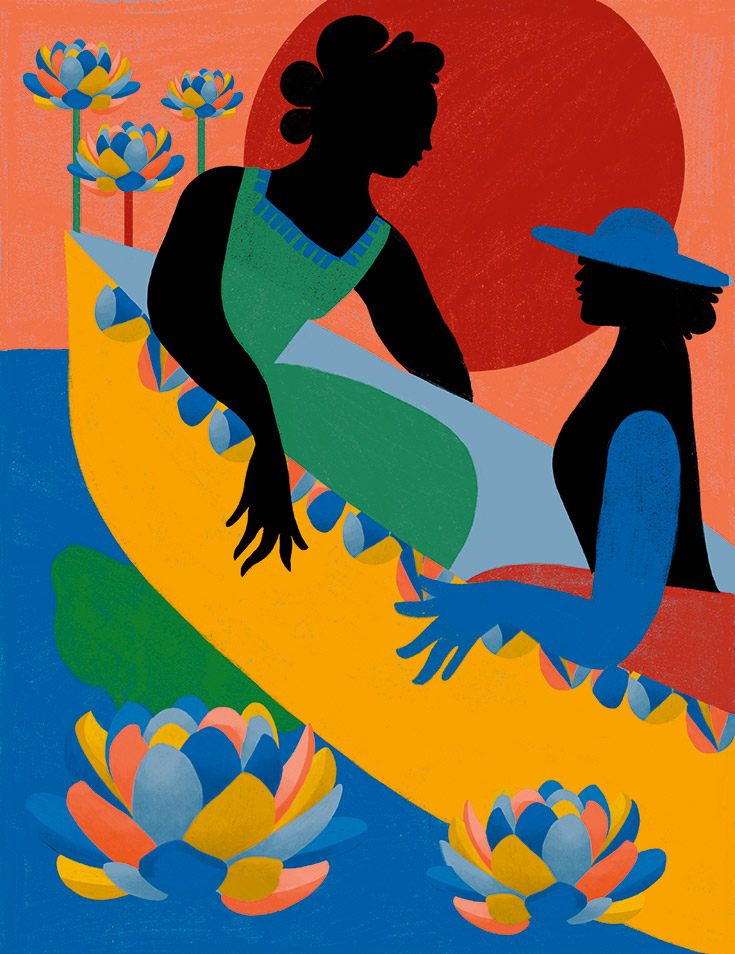
Patience
Patience, says Zenju Earthlyn Manuel, is tranquility and wellness, security and joy.
Shantideva, a Buddhist sage of old, aligned his teachings on patience with one of the most difficult emotions: deep-seated anger. I suspect his teachings on patience came from his own experience of being disrespected in the monastery where he lived. Anger and rage, along with fear, are obstacles to experiencing patience.
I’ve not always tamed my temper, which means according to the teachings of Shantideva, I have had little to no patience most my life. I’ve never known cool water, water to rest or reside in. Instead, I have known mostly fire. It has seemed to me that releasing the fiery forces of rage would mean not addressing what I’m angry about.
“Can we allow pain and suffering to be just what they are without anger or fear?”
Anger and rage are sacred to me. Being black-skinned, I resonate with author James Baldwin (1924–1987) who once said, “To be a Negro in this country and to be relatively conscious is to be in a state of rage almost all of the time.”
If anger and rage are embedded in a dark body, then how will I know patience and what it offers? If I feel dominated by someone, or something, for keeping me from living fully, how can patience enter my life? With these questions in mind, though I walked barefoot on the cold floors of temples, still the heat of what disturbed me surrounded my head. I wanted to know serenity, to reckon with the rage I felt living amid racism and more. Shantideva’s teachings addressed my quest.
When taunted by his fellow monks, Shantideva responded by delivering teachings that were so profound they still exist today, more than a thousand years later. That delivery was an act of patience. In his epic poetic teaching, The Way of the Bodhisattva, he expounded:
Those tormented by the pain of anger,
Never know the tranquility of mind—
Strangers they will be to every pleasure;
They will neither sleep nor feel secure.
I heard Shantideva calling us to freedom from the consequences of anger and rage. He was saying that the results of patience are tranquility and wellness, pleasure and joy, sleep and rest, and security in living a life without feeling threatened.
Can we allow pain and suffering to be just what they are without anger or fear? If the volcanic experiences of rage feel sacred, can they be held sacredly at the altar by which we have made our offerings, instead of harming others through revenge or defensiveness?
Shantideva did not perceive the monks as enemies. There are no enemies that we must set straight, attack, or mistreat. There are only terrorized people of all backgrounds, trying to control life’s circumstances through combat. The way of patience is to see that perceiving others as “the enemy” is the way of aggressive and militarized societies. The way of patience is not to wait, or take a breath, and see at a later time what is to be done; it is to completely withdraw, to take no further action, not now or in the future. The way of patience is to recognize anger and rage as unattended fear boiling over. Once we understand this, tranquility and peace will grace us.
Zenju Earthlyn Manuel’s books include Opening to Darkness and The Deepest Peace.
Truthfulness
Aishah Shahidah Simmons on how she learned to be honest, not just with others—but with herself.
I grew up hearing about the need for truth, justice, equity, and peace. I’m a middle-aged daughter of human rights activists who put their lives on the line upholding their values. They were incarcerated for registering Black people to vote in the Jim Crow South and for their conscientious objections to the Vietnam War.
I’m also a survivor of childhood sexual violence. I told the truth to my parents about the harm my grandfather was causing me. Initially, they didn’t want to believe it. They didn’t remove or protect me, because while my parents were working for peace and justice nationally and internationally, my grandparents were my caretakers.
“Practice is discovering the truth in all its complexities and beauty.”
As a result, I’ve had an interesting relationship with truth. I learned to lie to myself to survive the harm I endured for two years as a tween and to survive my parents’ roles in ignoring my pain for decades.
Like many, I joined Buddhist practice because I was suffering. I’m a Black feminist lesbian who thought my suffering was solely because of the external conditions of racism, sexism, sexual violence, and betrayal that I endured. I believed we required truth from others, not necessarily from ourselves.
However, Buddhist practice teaches me that awakening the truth from within is integral to liberation. Practicing awakening sacca (truth) from within deepens my ongoing experiential understanding about the universality of suffering through the four noble truths. In practice, sacca invites us to be present in acknowledging suffering, understanding how it arises, and how we can attenuate and end it. Sacca turns us again and again back to the noble eightfold path.
This is rigorous work. Instead of turning away from suffering, mine and others, or reacting to suffering without any discernment or compassion, I turn toward and respond to the truth of suffering by seeking the way out of suffering.
I do not suffer uniquely; neither do you. While there’s a broad spectrum of suffering, all suffering is fueled by greed, hatred, and delusion. Seeking truth from within creates fertile ground for me to hold the apparent reality of differences with the ultimate reality of oneness simultaneously. Without spiritually bypassing one to get to the other, I try to hold the truth of both.
I’ve dedicated my adult life to breaking silences about sexual trauma, offering healing paths, and seeking noncarceral accountability for harm. Before my practice, I didn’t fully understand that I run the tremendous risk of replicating harmful behavior if I’m not in touch with the truth from within.
There are times when we, as laypeople engaged in everyday society, are called to act immediately in the face of suffering. We cannot bypass that call. Instead, we can pause, even briefly, and be attuned to the truth from within to not exacerbate our suffering and the suffering of others.
The Buddha said, “We should investigate the very heart of things.” Practice is discovering the truth in all its complexities and beauty. We want to unveil the most profound truth in our own experiences. With truth, we see things as they are, not as we want them to be. Here, wisdom emerges from seeing reality, not delusion. That’s a pathway to freedom.
Aishah Shahidah Simmons is the editor of the anthology Love with Accountability and the producer/director of No! The Rape Documentary.
Determination
To overcome a lack of self-confidence, says Jan Willis, cultivate joyous resolve.
I’m deeply moved by the image the great poet Shantideva gives of the courageous bodhisattva who glides down into the sufferings of samsara “as swans sweep down upon a lotus lake.” As he described it, there’s such joy and ease in the bodhisattva’s determination.
The Pali term adhitthana (determination) and the Sanskrit word virya (effort) have much in common when it comes to describing a bodhisattva’s conduct. They each refer to the bodhisattva’s unshakable resolve, her strong and joyous determination, to fulfill the promise to liberate all beings and to carry out all the necessary activities to do so.
Awakening itself depends on determination. The Buddha, we’re told, was once an ordinary person like us, but he attained awakening owing to his strong resolve to aid others. This opportunity to reach enlightenment is there for all sentient beings! As Shantideva tells us in The Way of the Bodhisattva:
That if they bring forth strength of perseverance,
Even bees and flies
And gnats and grubs will gain
Supreme enlightenment, so hard to find.
My root teacher, Lama Thubten Yeshe, was well-known for his joyful attitude; nothing ever seemed to annoy him or bring him down. And he sought to pass on this calm and ease to his students. As a graduate student I remember often coming to him with worries, complaints, and feelings of despondency. His first remarks were always, “Oh, that’s so simple, dear! Don’t worry; that’s so easy!” I now see that advice as a mark not only of his great compassion, but of his own practice of determination.
“Awakening itself depends on determination.”
Lama Yeshe once told me, “Study and learn well everything—whether languages or other skills—because, one day, you might be able to help just one person because of knowing that language or skill!” He said I should “approach every chance to learn with that kind of attitude!” He was showing me how to practice determination in earnest.
Training in the perfection of determination helps us overcome the three types of laziness: having no wish to do good, being distracted by negative activities, and underestimating or doubting one’s ability. When I first met Lama Yeshe, I was particularly shackled by the third laziness. Beset with low self-esteem, I doubted my ability to do good and thought I could never accomplish any big goals—to say nothing of achieving awakening! Yet, over the fifteen years that I studied with him, developing my self-confidence was his biggest gift and teaching. He did this in subtle and not-so-subtle ways, from once tasking me with writing his lecture for that evening—using only Sanskrit terminology, in two hours!—to praising my quick intelligence at every turn and encouraging all my academic pursuits. By the time I earned my graduate degree from Columbia, I’d taken twice the number of required courses in half the time! Even today my heart delights when I have a Buddhist topic to investigate, or a lecture to prepare that helps others better understand a principle of Buddhism.
I smile now, thinking of my lama’s loving remarks: “That’s so simple, dear! Of course, you can, dear!” And of those gnats and grubs, future buddhas all.
Jan Willis is the author of Dreaming Me Black, Baptist, and Buddhist, and Dharma Matters: Women, Race, and Tantra.
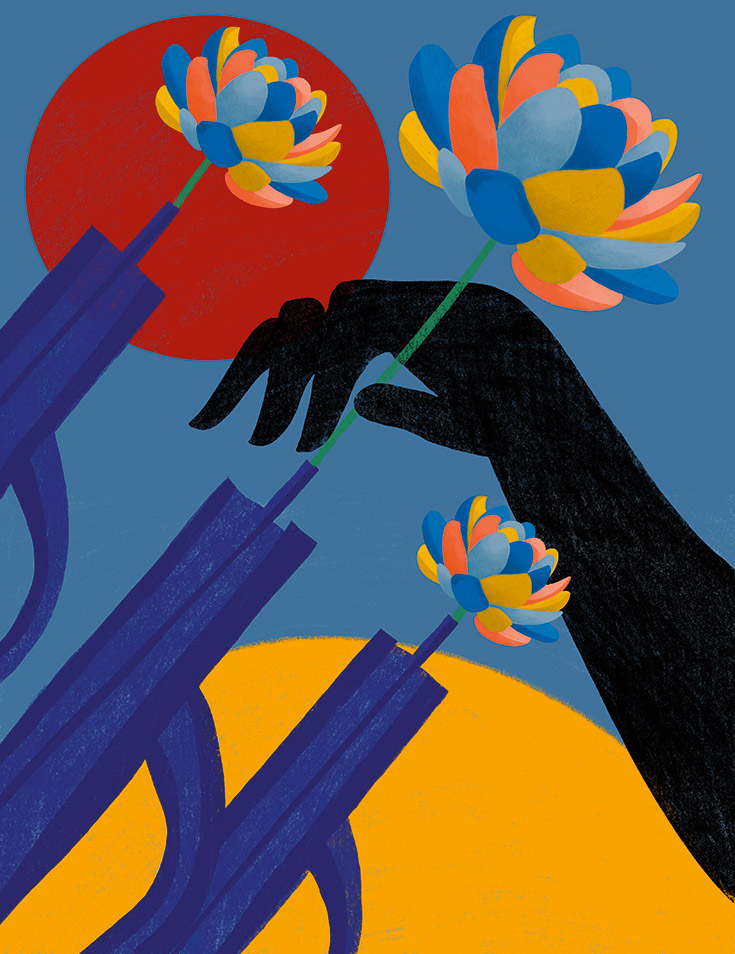
Loving-Kindness
Combat veteran Ralph Steele explains how metta meditation supports his healing from PTSD.
At Vipassana meditation retreats in the early 1970s, when people found out I was a Vietnam combat veteran, many responded with disgust. “How could you do those things,” they asked, “and come to a retreat like this?”
They did not understand how recurrent trauma from war activates your nervous system—how anger, anxiety, and frustration arise as devastating poisons for mind and body. Removing the uniform is a massive, lonely transition. While I continued practicing and attending retreats, I refrained from sharing my veteran status. It was difficult to be in a meditation community that opposed my former livelihood.
“I embarked on the eightfold path to manage trauma, using loving-kindness in every step of the path.”
Even when trauma shuts down the heart, we can cultivate universal love. In the Karaniya Metta Sutta, the Buddha’s discourse on loving-kindness, he talks about how important it is to be “one who is skilled in goodness and who knows the path of peace.” Learning to skillfully cultivate goodness means developing loving-kindness as we walk the dharma path.
Loving-kindness (metta or maitri) practice begins with tenderness toward oneself, by saying “May I be well.” Then, we focus on comforting relationships: a partner, an elder, a pet, or someone we highly regard who loves us unconditionally. Visualize them and, in your mind, express loving words for them, like, “May you be well.” This practice can continue until we sense our comfort zone growing. Next, we picture someone we have neutral feelings for—maybe this is someone we only know casually—and we practice metta for them. Finally, we visualize someone with whom we’ve had difficulties, and again we wish them well until we sense growth.
As proven by researchers, we’re naturally social beings and suffer when alienated. In 1987, I began teaching Vipassana meditation. This was a social endeavor that helped my PTSD. My teammates and friends had not only died from war, but also from heroin overdose. My dharma community became my new team. I ramped up the practice of loving-kindness to ease my mental, physical, and emotional pain. We were guided by the four noble truths: recognizing an illness, examining its causes, treating it, and managing it through a safe environment to let love flow and reach new levels with a team.
I embarked on the eightfold path to manage trauma, using loving-kindness in every step of the path. I cultivated loving-kindness in my speech, actions, and livelihood. With loving-kindness flowing from my open heart, my mindfulness grew. My effort became motivation, and my concentration became calm alertness. Wisdom was invaluable alongside love to cultivate right view and healthy thinking.
Working with metta soothed my PTSD, and it helped me understand my perceptions, resolve uneasy mental formations, and find the right choice of words. Loving-kindness infused my body, expanding my comfort zone in my dharma community and personal relationships. Feeling wordlessly at ease in such a wonderful community was like coming home.
Using the teachings of the Kariniya Metta Sutta combined with the four noble truths with emphasis on the eightfold path builds self-confidence and helps us work with life’s difficult moments. When we come into equanimity, we understand the skills of goodness, and the path of peace becomes clear.
Ralph Steele is the founder of Life Transition Meditation Center in Santa Fe where he serves as the guiding meditation teacher.
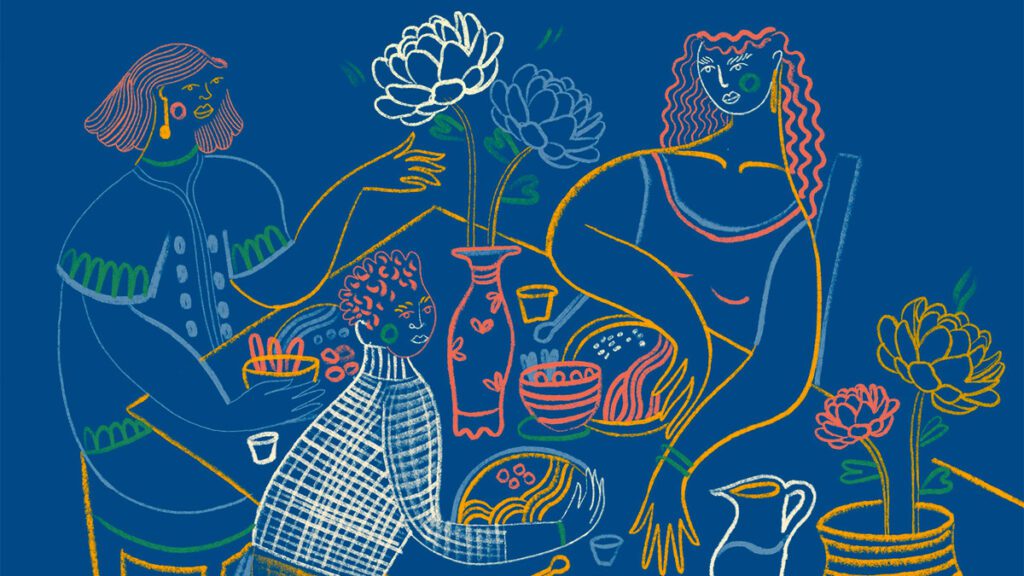
Equanimity
In any given situation, how can you know if, when, and how you should respond? Bradley Donaldson explains.
For some reason, equanimity—the last of the ten paramis—has a bad reputation. I imagine it is because the word “equanimous” brings to mind the image of a cold and unmoving practitioner. Yet it’s actually about peace, not apathy. When I think of equanimity, I picture the face of the legendary bodhisattva Guanyin. With a serene smile, she aids those in need.
In addition to being a parami, equanimity also shows up in another well-known Buddhist list of qualities: the four brahmaviharas, or sublime attitudes. The other brahmaviharas are loving-kindness, compassion, and appreciative joy. Like the roots of a tree, the previous paramis and brahmaviharas reinforce equanimity.
“Breathing in, we see the situation for what it is. Breathing out, we stay curious. ”
Indeed, the late Venerable Thich Nhat Hanh often offered the image of a tree swaying in violent winds when he discussed equanimity. Its leaves and branches may flutter about, but the trunk stays centered, supported by a strong root system. Equanimity is that stable center held up by the other qualities of heart.
Of course, we’re not literal trees. We are not inert, and equanimity is not inertness. We can and should respond to moments and conditions that arise as we go through life. Equanimity is being centered enough to know if, when, and how to respond to life’s opportunities and challenges. Equanimity is the wisdom to accept circumstances beyond our control.
Now that we have some understanding of what equanimity is, let’s talk about how to cultivate it. Like any skill we would like to develop, being equanimous takes practice. Our practice takes place on and off the cushion.
When we meditate, equanimity is about cultivating stability while remaining curious and open to our experience. We might use mindful breathing to do this. While breathing in and out, what do we confront on the cushion? Discomfort, perhaps, or painful memories? Maybe restlessness and boredom? All that we suppress tends to rise to the forefront when the mind is quiet. Equanimity becomes about accepting these arisings. The breath, then, becomes our anchor, our tree trunk.
Off the cushion, the practice is similar in that we are cultivating stability, but now we’re doing it while contending with the challenges of day-to-day life. So, how do we approach what the Buddha called the “worldly conditions” of gain, loss, status, disgrace, praise, blame, pleasure, and pain? Do we react with bewilderment and frustration, or with understanding? Can we hold our experience with loving-kindness, compassion, or even joy? Breathing in, we see the situation for what it is. Breathing out, we stay curious.
As we practice, we begin to understand the meaning of equanimity on an intimate, visceral level, and this understanding grows within us over time. We can follow the Buddha’s advice to practice equanimity in such a way that it is “abundant, expansive, and limitless.” We can strengthen our ability to hold ourselves, others, and the world with love and compassion, and once we do that, the fuller meaning of equanimity appears: the calm ability to know what to do, what not to do, or whether to even “do” anything at all.
Formerly a monk, Bradley Donaldson teaches meditation. He’s focused on helping queer and BIPOC folks heal and cultivate connection.


 Fransebas
Fransebas 






























